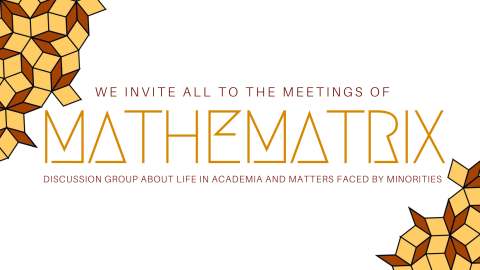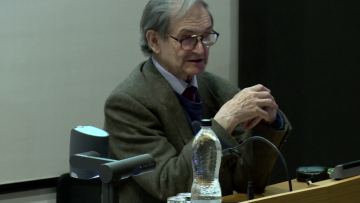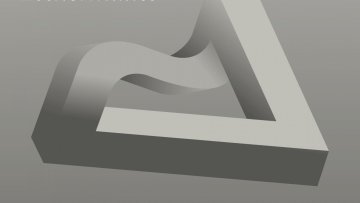Roger Penrose's relationship with the artist M.C. Escher was not just one of mutual admiration. Roger's thinking was consistently influenced by Escher, from the famous Penrose tiling to his groundbreaking work in cosmology. The respect was mutual, as was clear when Roger dropped in to see Escher at his home...
Oxford Mathematics hosted this special event in its Public Lecture series during the conference to celebrate the 20th Anniversary of the foundation of the Clay Mathematics Institute.
Mathematrix lunches - Meet and Greet
Abstract
This is a welcome to everyone who is interested in discussing and learning more about topics relating to life in academia and issues faced by minorities. We will tell you more about Mathematrix and the events upcoming in the term, as well as discussing ideas for future terms.
All staff, ECRs and postgrad students are invited to join. The lunches are free, relaxed and informal, and people may come and go as they please.
Mathematrix lunches - Imposter Syndrome
Abstract
The meeting on Monday 15th October will be on Impostor Syndrome. In this meeting we will discuss what impostor syndrome is, what might be the causes of it, and some advice for people who are struggling with it. For anyone who wants to read up on what it is and some different types of impostor syndrome in advance, we recommend this blog post: https://www.themuse.com/advice/5-different-types-of-imposter-syndrome-a…. If you have a smart phone or tablet that you can bring with you, we encourage you to, as we will have some anonymous voting, and the more of you that can join in, the better!
We hope to see many of you there again: Quillen Room (N3.12), Monday 1-2pm.
15:45
Directed algebraic topology
Abstract
In directed algebraic topology, a topological space is endowed
with an extra structure, a selected subset of the paths called the
directed paths or the d-structure. The subset has to contain the
constant paths, be closed under concatenation and non-decreasing
reparametrization. A space with a d-structure is a d-space.
If the space has a partial order, the paths increasing wrt. that order
form a d-structure, but the circle with counter clockwise paths as the
d-structure is a prominent example without an underlying partial order.
Dipaths are dihomotopic if there is a one-parameter family of directed
paths connecting them. Since in general dipaths do not have inverses,
instead of fundamental groups (or groupoids), there is a fundamental
category. So already at this stage, the algebra is less desirable than
for topological spaces.
We will give examples of what is currently known in the area, the kind
of methods used and the problems and questions which need answering - in
particular with applications in computer science in mind.
Understanding Thermodynamic Theories
Abstract
Many scientists, and in particular mathematicians, report difficulty in understanding thermodynamics. So why is thermodynamics so difficult? To attempt an answer, we begin by looking at the components in an exposition of a scientific theory. These include a mathematical core, a motivation for the choice of variables and equations, some historical remarks, some examples and a discussion of how variables, parameters, and functions (such as equations of state) can be inferred from experiments. There are other components too, such as an account of how a theory relates to other theories in the subject.
It will be suggested that theories of thermodynamics are hard to understand because (i) many expositions appear to argue from the particular to the general (ii) there are several different thermodynamic theories that have no obvious logical or mathematical equivalence (iii) each theory really is subtle and requires intense study (iv) in most expositions different theories are mixed up, and the different components of a scientific exposition are also mixed up. So, by presenting one theory at a time, and by making clear which component is being discussed, we might reduce the difficulty in understanding any individual thermodynamic theory. The key is perhaps separation of the mathematical core from the physical motivation. It is also useful to realise that a motivation is not generally the same as a proof, and that no theory is actually true.
By way of illustration we will attempt expositions of two of the simplest thermodynamic theories – reversible and then irreversible thermodynamics of homogeneous materials – where the mathematical core and the motivation are discussed separately. In conclusion we’ll relate these two simple theories to other, foundational and generalised, thermodynamic theories.
The signature hidden in the deformation of a free surface
Abstract
The accurate modelling of geophysical flows often requires information which is difficult to measure and therefore poorly quantified. Such information may relate to the fluid properties or an unknown boundary condition, for example. The premise of this talk is that when the flow is bounded by a free surface, the deformation of this free surface contains useful information which can be used to infer such unknown quantities. The increasing availability of free surface data through remote sensing using drones and satellites provides the impetus to develop new mathematical methods and numerical tools to interpret the signature embedded in the free surface deformation. This talk will explore two recent examples drawn from glaciology and inspired from volcanology for which free surface data was successfully used to reconstruct an unknown field.




